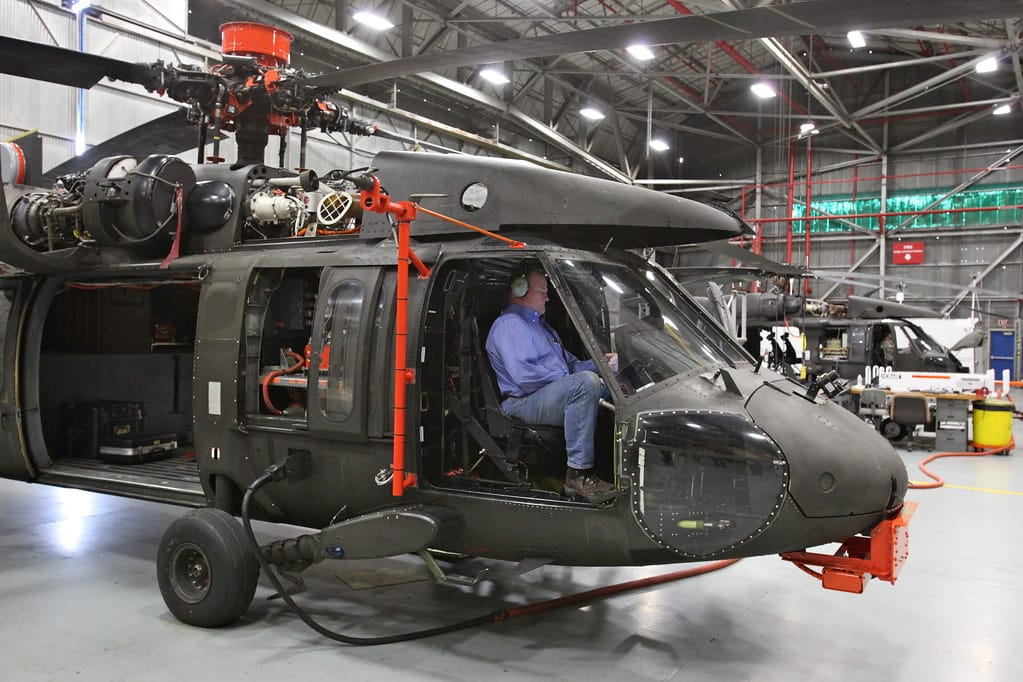Autonomous AI Black Hawks Take Flight: Revolutionary Wildfire Fighting Technology Tested
The future of wildfire suppression took a dramatic leap forward as autonomous AI-guided Black Hawk helicopters successfully completed their first major field tests, marking a potential game-changer in humanity's battle against increasingly devastating wildfires.
The Technology Behind the Innovation
The modified UH-60 Black Hawk helicopters, equipped with advanced artificial intelligence systems, demonstrated unprecedented capabilities in wildfire detection, mapping, and suppression during recent trials. These autonomous aircraft can operate 24/7 without human pilots, using sophisticated computer vision and machine learning algorithms to navigate through smoke-filled environments that would ground traditional aircraft.
The AI system processes real-time data from multiple sensors, including thermal imaging cameras, LIDAR, and atmospheric monitoring equipment, to create detailed fire behavior models and optimize suppression strategies. This technology allows the helicopters to make split-second decisions about water drop locations, flight paths, and safety protocols without human intervention.
Addressing the Growing Wildfire Crisis
The timing couldn't be more critical. Wildfire seasons have extended by an average of 75 days compared to the 1970s, with annual burned acreage in the United States increasing by over 200% since 1983. The 2023 wildfire season alone saw more than 56,000 fires burn approximately 2.6 million acres across the country, causing billions in damages and claiming dozens of lives.
Traditional firefighting methods face significant limitations during peak fire conditions. Human pilots cannot safely operate in zero-visibility conditions, extreme turbulence, or at night when fires often spread most rapidly. These autonomous systems eliminate human risk while maintaining continuous operational capability.
Testing Results Show Promise
Initial field tests conducted in collaboration with the U.S. Forest Service demonstrated impressive results. The AI-guided helicopters achieved:
- 95% accuracy in fire perimeter mapping under challenging visibility conditions
- 40% faster response times compared to traditional helicopter deployment
- Continuous 16-hour operations without crew rotation requirements
- Zero safety incidents during 200+ hours of autonomous flight testing
The helicopters successfully executed precision water drops within 10 meters of designated targets, even in 40-mph crosswinds and near-zero visibility conditions that would ground conventional aircraft.
Cost-Effectiveness and Scalability
Beyond safety improvements, the economic implications are substantial. Traditional wildfire suppression costs the federal government over $3 billion annually, with helicopter operations accounting for approximately 30% of those expenses. Autonomous systems could reduce operational costs by up to 60% while dramatically increasing coverage capacity.
A single autonomous Black Hawk can carry 2,650 gallons of water or fire retardant, equivalent to traditional firefighting helicopters, but can operate continuously with only periodic maintenance and refueling stops. The AI systems also optimize flight patterns and drop locations, reducing wasted suppressant and improving overall effectiveness.
Challenges and Implementation Timeline
Despite promising results, several hurdles remain before widespread deployment. Regulatory approval from the Federal Aviation Administration for autonomous aircraft operations in emergency scenarios requires extensive documentation and safety protocols. Additionally, integration with existing firefighting command structures and communication systems needs refinement.
Weather remains a significant challenge, as extreme fire conditions can still overwhelm even advanced AI systems. The technology performs best when deployed early in fire development, emphasizing the importance of rapid detection and response networks.
Current projections suggest limited operational deployment could begin within 18 months, with broader implementation expected by 2027, pending regulatory approvals and additional testing.
The Road Ahead
This breakthrough represents more than technological advancement—it's a fundamental shift in emergency response capabilities. As climate change continues to intensify wildfire risks, autonomous systems offer a path toward more effective, safer, and cost-efficient firefighting operations.
The successful testing of AI-guided Black Hawks signals a new era where artificial intelligence doesn't just support human decision-making but actively protects communities and natural resources. While challenges remain, this technology promises to save lives, reduce environmental damage, and provide hope in our increasingly fire-prone world.
As we face longer, more intense fire seasons, these autonomous guardians of the sky may prove to be exactly what we need to turn the tide in our ongoing battle against wildfires.
